Brereton
OS Grid ref:-
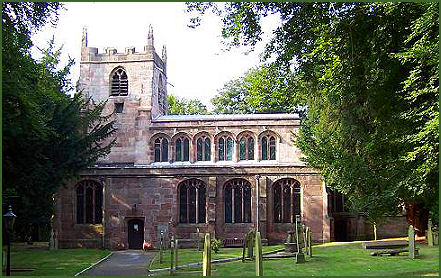 Brereton contains the hamlets of Brereton Green, Brereton Heath and Smethwick Green and is situated between Holmes Chapel and Congleton. Brereton is mentioned in the Domesday book as the Manor of Bretune.
Brereton contains the hamlets of Brereton Green, Brereton Heath and Smethwick Green and is situated between Holmes Chapel and Congleton. Brereton is mentioned in the Domesday book as the Manor of Bretune.
Brereton Heath Country Park, a 40-hectare park, which once formed part of the Brereton Hall Estate, has over 50 acres of mainly silver birch and oak woodland surrounding a 15 acre lake as well as areas of heathland, a wildflower meadow and wetland areas. Until 1959 the poor sandy soil supported a woodland plantation and heath vegetation which was managed for timber and game. Then a very fine and pure silica sand was discovered and this was extracted and used in the manufacture of moulds, glass, talcum and cleaning powders. The lake is formed from the quarry left after the extraction.
There is a wealth of bird life at the country park, particularly in the woodland, including Great and Lesser spotted woodpeckers, nuthatch, treecreepers, kingfisher, heron, great crested grebe and goldfinch. The reserve offers a variety of walks, including an easy access trail through the woodland. Brereton Heath has a visitor centre, which includes a visitor information room, toilets, and changing rooms for lake users.
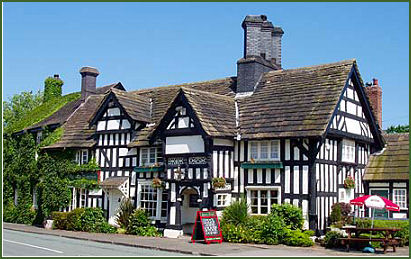 Red sandstone St Oswald's Church is situated to the north of the village of Brereton Green, through the arch of Brereton Hall Lodge (pictured left) and stands on the banks of the River Croco.
Red sandstone St Oswald's Church is situated to the north of the village of Brereton Green, through the arch of Brereton Hall Lodge (pictured left) and stands on the banks of the River Croco.
The building, which is perpendicular in style, is dedicated it to St. Oswald of Northumberland and dates from around 1550 although a chapel has occupied the site from the reign of King Richard the Lionheart. Sir William Brereton built a church at Brereton in around 1200 to fulfill a vow he made in the Holy Land while participating in the Third Crusade.
The sanctuary has a monument to another William Brereton, who died in 1618, high on the wall above the monument armour which may have belonged to Sir William Brereton is displayed.
Sir William fought at the seige of Maynooth in Ireland in 1534. while in the south aisle is a monument to William Smethwick, who died in 1643, and his wife Frances, who died in 1632. The octagonal font is dated 1660. St. Oswald's was restored in the 19th century by Gilbert Scott. The church boasts seventeenth century altar rails and fine sixteenth century Flemish choir stalls. There is also a parish chest with three locks.
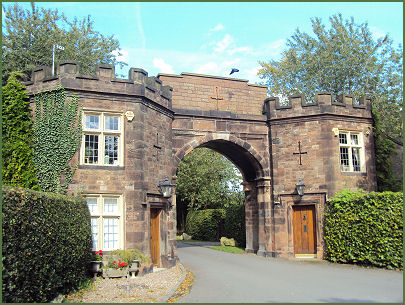 Brereton keeps up the legend of Lord Brereton and the bear. William Brereton killed his valet in a temper after he was interrupted at his meal. His punishment was to be a fight with a bear, but the King gave him three days to make a muzzle to contain the bear.
Brereton keeps up the legend of Lord Brereton and the bear. William Brereton killed his valet in a temper after he was interrupted at his meal. His punishment was to be a fight with a bear, but the King gave him three days to make a muzzle to contain the bear.
After three days the bear was let loose on the lord, and luckily for him, the muzzle proved to be successful. The muzzled bear became the Crest on the Brereton Coat of Arms. In 2004, the Church established a biennial Bear Festival in the Parish. The Festival takes place in odd-numbered years during July and August. Many bear-themed events are held over the period to raise money for St Oswald's Church and local organizations.
The main village pub, the black and white half timbered Bears Head (pictured right) was built in 1625 and was originally known as The Boars Head.
The Bear's Head was a popular posting house on the London to Liverpool turnpike, becoming so busy that in the eighteenth century a new wing was built and a range of stables constructed on the opposite side of the road. The inn carries the sign of a muzzled bears head, until recently, a stuffed bear's head was displayed under a small canopy above the front door. The head is now preserved in the church in connection with the Brereton monument.
Brereton Hall
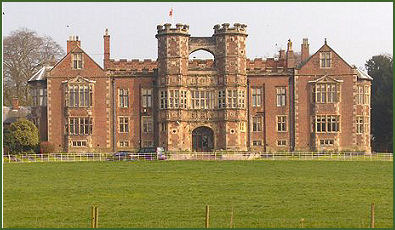 Brereton Hall is a situated to the north of the village of Brereton Green, adjacent to St Oswald's Church. The manor of Bretune is listed in Domesday Book. The brick built hall dates back to 1586, as is inscribed over the entrance.
Brereton Hall is a situated to the north of the village of Brereton Green, adjacent to St Oswald's Church. The manor of Bretune is listed in Domesday Book. The brick built hall dates back to 1586, as is inscribed over the entrance.
It was built for Sir William Brereton (1550–1631), created Baron Brereton of Leighlin, County Carlow in 1624 and a founder of the Royal Society. As a youth Sir William had lived with the Savage family of Runcorn and saw Rock Savage being built. He later married Alice Savage and built Brereton Hall in the style of Rock Savage. The hall impressed the antiquarian William Camden, who wrote that Sir William Brereton had "added much credit and honour to the place by a magnificent and sumptuous house that he had there built".
Over the entrance are the royal arms of Elizabeth I in a panel, which are flanked by the Tudor rose and the Beaufort portcullis. The twin towers were originally adorned by copper cupolas, but these were removed. The original house was built to a letter 'E' design but the middle bar was destroyed by fire, a large conservatory now occupies its place.
Beyond the entrance is a lower hall and a grand staircase leading to a long gallery which runs along the front of the house. This leads to the drawing room which contains a frieze with nearly 50 coats of arms and a chimney piece carved with the Brereton emblem, a muzzled bear.
The Brereton family
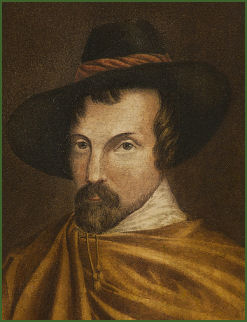 The Brereton family has its origins in 1175 with William de Brereton, or Breton, whose family had arrived from France with William the Conqueror. It is recorded that the manor of Brereton was held by the Brereton family from shortly after the Norman Conquest until 1722, when the last Lord Brereton died.
The Brereton family has its origins in 1175 with William de Brereton, or Breton, whose family had arrived from France with William the Conqueror. It is recorded that the manor of Brereton was held by the Brereton family from shortly after the Norman Conquest until 1722, when the last Lord Brereton died.
In the sixtenth century, another William Brereton, (son of Sir Randle Brereton) a Groom of the Privy Chamber of Henry VIII, was arrested and sent to the Tower of London on the orders of the king, along with four others, he was charged with high treason as the lover of the king's second wife, Anne Boleyn.
On an April day in 1536 at a tournament at Greenwich, Queen Anne dropped her handkerchief, a chivalrous knight, Brereton retrieved it on the point of his lance and handed it back to the Queen. Henry left the royal stand in a fury. Both Anne and the men charged with her are now thought to be innocent and the charges invented by Thomas Cromwell because Henry, convinced that Anne would not now provide him with a longed for son and heir to the Tudor dynasty, wished to be rid of her.
Despite protestations of innocence, they were sentenced to death and beheaded on Tower Hill on May 17th 1536. Brereton's last words prior to his execution, "The cause whereof I die, judge not. But if you judge, judge the best," are interpreted as a cautious declaration of his innocence which would avoid the forfeiture of his estates.
The powerful Brereton family exerted influence in Cheshire with holdings in Handforth, Malpas, Cheadle and at their country seat at Brereton Hall. Another William Brereton, the 1st Baronet, (pictured right) inherited substantial estates in Cheshire on the death of his parents in around 1610. He became a Parliamentary commander during the Civil War and defeated the Royalists at the First Battle of Middlewich on 13th March 1643 and established his Cheshire headquarters at Nantwich. In 1643, when Parliament's cause floundered elsewhere, Brereton stood out as a success, establishing Parliamentary dominance in Cheshire. More Cavaliers entered Cheshire to counter Brereton's forces and in late 1643 he suffered his only major defeat at the Second Battle of Middlewich. The Royalists were unable to press home the initiative however and in January 1644 Lord Byron's Royalists were routed by Sir Thomas Fairfax and Brereton at the Battle of Nantwich. He also commanded the Parliamentary forces during the Siege of Chester. There is a story that after the Battle of Nantwich, Sir William Brereton organized a siege of Brereton Hall, the home of his Royalist relative, whose young son allegedly scratched on a window pane:-
"On yonder hill my uncle stands,
but he will not come near,
for he is a Roundhead,
and I am a Cavalier."
After the Civil War was over, Brereton was richly rewarded for his services to Parliament. In 1652, he was given the tenancy of Croydon Palace, the former home of the Archbishop of Canterbury. He died at Croydon in 1661.
The Brereton's established Handforth Hall when they became lords of the manor of the Bosden area in the early 1500s. One Sir Richard Brereton was the last owner of Tatton Park before the Egerton family took it over. The last Lord Brereton, Francis, died in 1722 without issue, thereby ending a six hundred year lineage.
